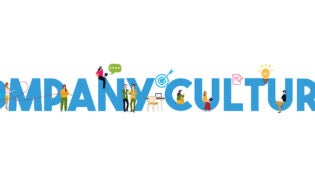Home > Leadership > Open Culture >
10 Principles Define Your Startup as Open versus Closed
By: Marty Zwilling

Too many customers have long felt distanced from many successful brands, seeing them as closed and mysterious environments, focused only on profits and killing competitors. They may not have noticed the wave of “open businesses,” spawned by the Internet and social media. These are responding to the demands of this new world for collaboration, trust, and transparency.
In a recent book by David Cushman with Jamie Burke, The 10 Principles of Open Business, the authors contend that many recent success stories in business, including Google, Apple, and Amazon, were built on at least one open business principle. In fact, according to McKinsey, open businesses are 50% more likely to outperform their rivals today and grow sustainable profits.
Related Article: Creating an Open Business Culture
I especially like Cushman’s outline of the ten principles which distinguish the organization and operation of an open business from the more traditional closed model. Here is my interpretation of the key focus points and requirements to be categorized as open:
- Shared beliefs (purpose). Your stakeholders all need to understand and agree to the “why” of your organization. As the business owner, you need to have a higher level purpose (beyond making money), and be willing and able to continually clarify and communicate this to your team and your customers.
- Shared risks (open capital). Share the costs and risks, and therefore the ownership and the passion with your constituents. In the idea stage, get customers involved with an engaging contest. If you are at the funding stage, try the new crowd-funding platforms or micro-capital investments. Offer equity in future projects to people outside your business.
- Shared clients and objectives (networked organization). Support and enable mutually beneficial activities inside and outside the organization. Bring focus on your core competencies and expertise by educating and helping others, who can then return the favor by helping you or buying from you.
- Shared knowledge packaging (shareability). Establish vehicles, like a formal customer satisfaction program, to recognize and reward staff and customers for sharing what they can do to help you. Use and contribute to shared resources, like Wikipedia and Creative Commons, rather than relying totally on proprietary and internal tools.
- Shared and collaborative activity (connectedness). Enable people within the organization to find what (or who) they need when they need it. Set an example by being visibly connected to the people and information you need through social media. Encourage collaboration by providing the platform, and setting best practices.
- Shared ideas and rewards (open innovation). Bring customers and stakeholders into the innovation process to share the risk and reward of development. Consider setting up a new idea forum on your website, with rewards and motivational offers, to facilitate involvement from customers and business partners.
- Shared intelligence and opportunities (open data). Make data available to those inside or outside of your organization who can make best use of it. Contribute and give talks to local business organizations, like the Chamber of Commerce, to establish your expertise, and contribute information as well as gather it.
- Shared decision process (transparency). Make decisions openly and be honest about the criteria on which they are based. Ramp up transparency by making people the boss of what they do. Respond openly and in a timely fashion to requests for information about the business.
- Shared leadership (member and customer led). Make sure your organization is structured around the formal co-operation of employees, customers, and partners, for their mutual social, economic, and cultural benefit. Do things with your customers and staff, rather than to them. Strive to treat them as genuine partners.
- Shared goodwill (trust). Foster a mutually assured reliance on the character, ability, strength, or truth of the partnership between your company and customers. Earn trust through your consistent actions over time. Review your current investment in “creating goodwill.” Compare this to how highly you value trust. Adjust accordingly.
In the last couple of years, I have seen a tremendous upswing in “open business” movements, especially by entrepreneurs and startups. Examples include Conscious Capitalism®, led by John Mackey of Whole Foods, The B Team, led by serial entrepreneur Sir Richard Branson, and the Benefit Corporation (B Corp) form of business now available in 28 states.
We seem to have a rare convergence between demands from the marketplace, driven by the real-time collaborative Internet culture, and a desire by entrepreneurs to define success as something more than making money. I think it’s really happening, and it’s time to take a reality check on your own business, and your own shopping habits, to capitalize on this trend.
This article was originally published by Startup Professionals
Published: June 10, 2015
3997 Views
3997 Views












